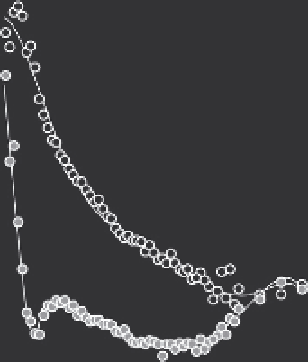Biology Reference
In-Depth Information
evaluation of the MCTQ and the computation of all derived variables are
given in the supplementary online material of Ref.
2
.
MSF is normally distributed in the general population, but with a slight
overrepresentation of late types. The differences between the extremes of this
distribution (extreme “larks” vs. extreme “owls”) are as much as 12 h. Chro-
Chronotype becomes progressively later throughout puberty and adolescence,
time has surprisingly little influence on free-day sleep timing. Within
Germany, chronotype (MSF
sc
; MSF adjusted for age and sex) becomes later
by 4 min for every longitude from east to west, that is, by the same time that
the sun needs to cross one longitude. Thus, despite experiencing similar social
times (work times, evening news programs, etc.), the internal timing system of
the German population is still adjusted to sun time.
The strong influence of social timing on human sleep becomes apparent
when comparing sleep-wake behavior on work and free days. The vast
majority of the population shows clear differences in both sleep duration
A
B
9.5
10.0
9.5
9.0
9.0
8.5
Free days
8.5
8.0
8.0
7.5
Work days
7.5
7.0
7.0
10
20
30
40
50
60
70
80
10
20
30
40
50
60
70
80
Age (years)
Age (years)
Figure 11.3 Average sleep duration as a function of age. (A) Weekly averages of
sleep duration. (B) Sleep duration separately for free days (open circles) and for
workdays (gray dots). Curves are polynomial fits; vertical lines represent standard errors
of the mean (
SEM;
in most cases they are smaller than the respective symbols).































































































































Search WWH ::

Custom Search